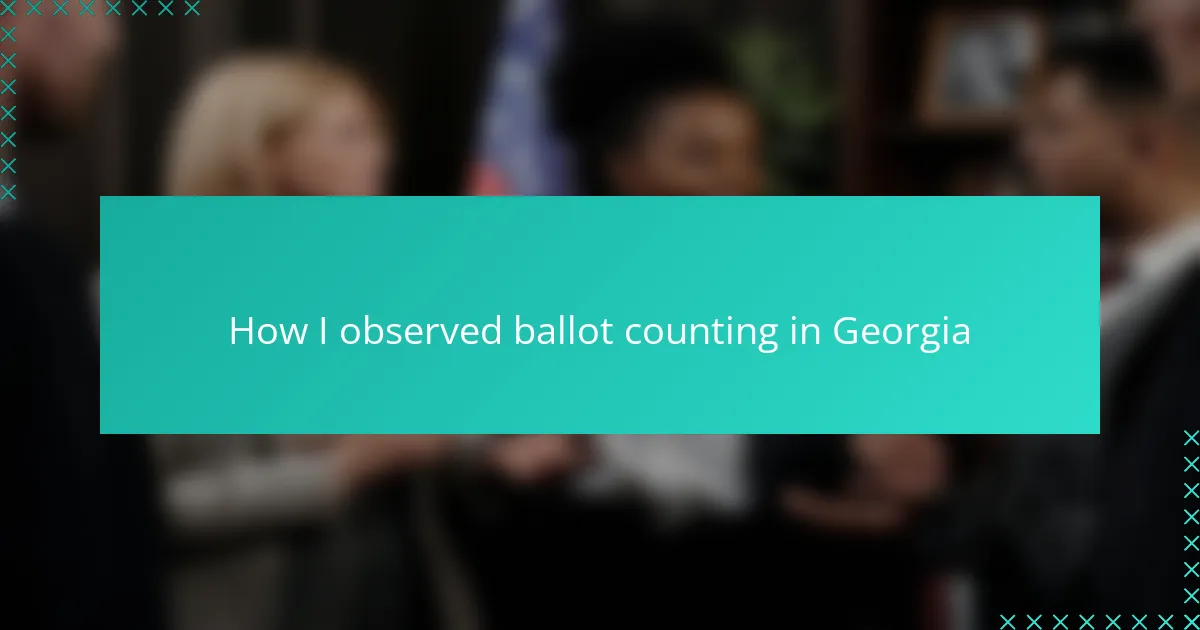Key takeaways
- Ballot counting combines human oversight and technology, emphasizing accuracy and transparency in the electoral process.
- The Georgia election process includes various safeguards and community involvement, showcasing democracy as a collective effort.
- Transparent counting builds trust by allowing observers to witness and engage in the process, reinforcing accountability.
- Patience and cooperation among election workers during challenges highlight the importance of resilience and effective communication in ensuring election integrity.
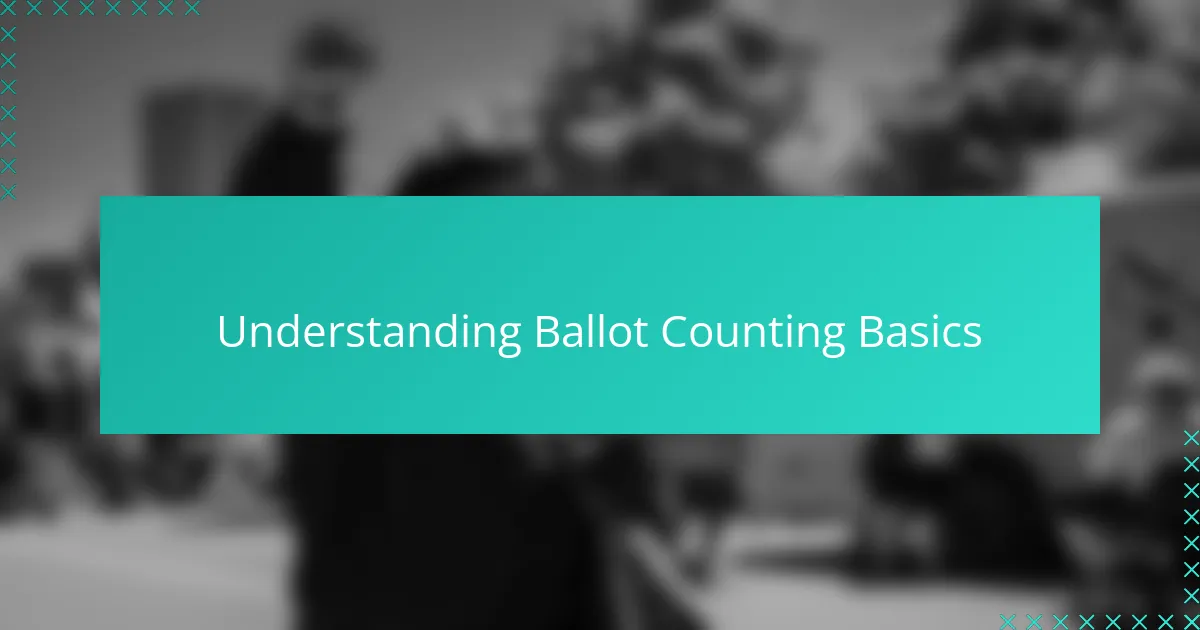
Understanding Ballot Counting Basics
When I first watched the ballot counting process, I realized how foundational accuracy is to democracy. Each vote represents a voice, and the meticulous sorting and tallying are designed to honor that trust. Have you ever wondered how something so simple as counting paper slips can carry such enormous weight?
The process involves several layers of verification, from election workers carefully checking signatures to machines scanning and counting ballots. I was struck by the balance between human oversight and technology, a partnership that aims to minimize errors and maintain transparency. This blend reassured me but also made me appreciate the dedication required to keep every step fair.
What surprised me most was the quiet intensity in the room—the focus of everyone involved was palpable. Ballot counting isn’t just routine; it’s a responsibility carried out with great care. Observing this made me reflect on how fragile and precious the act of voting truly is in preserving our shared political system.
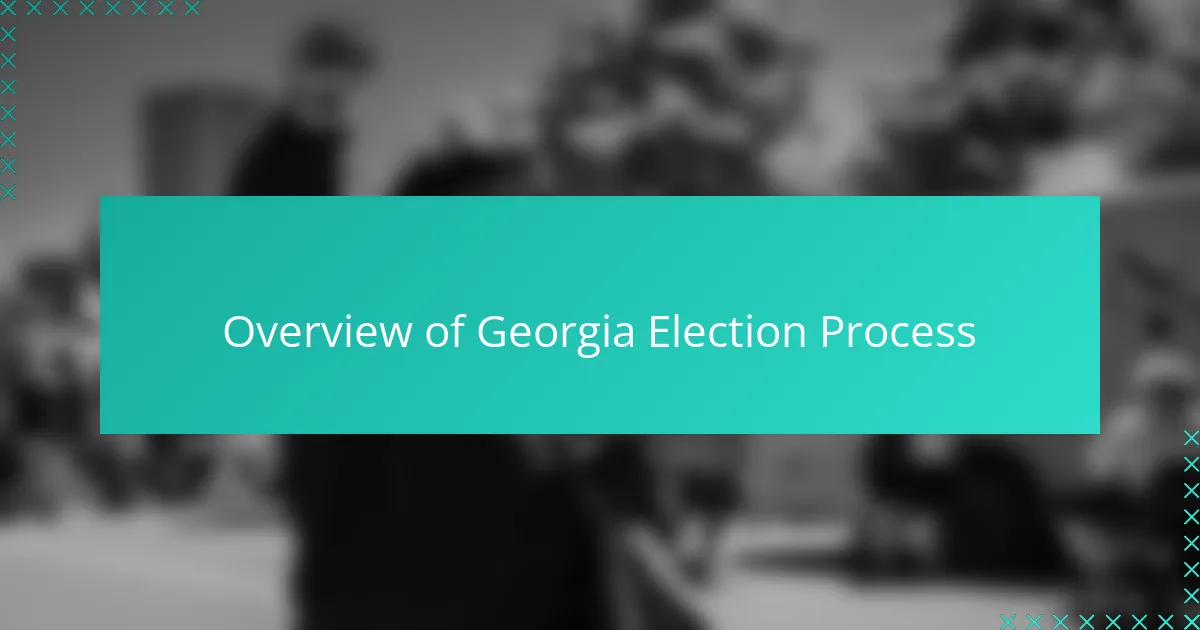
Overview of Georgia Election Process
Georgia’s election process felt surprisingly detailed when I first delved into it. From voter registration to casting ballots, every step seemed designed to protect the integrity of the vote. Have you ever thought about how many safeguards are packed into a single election?
What really caught my attention was the use of both paper ballots and electronic machines. This hybrid approach seemed to offer a practical way to double-check results without slowing down the process. I found myself admiring the layers of protection, even if at times it appeared a bit complex.
One thing I couldn’t ignore was the level of community involvement. Local officials, volunteers, and observers all played crucial roles, each person contributing to the system’s checks and balances. Witnessing this made me appreciate how democracy is, at its core, a collective effort.
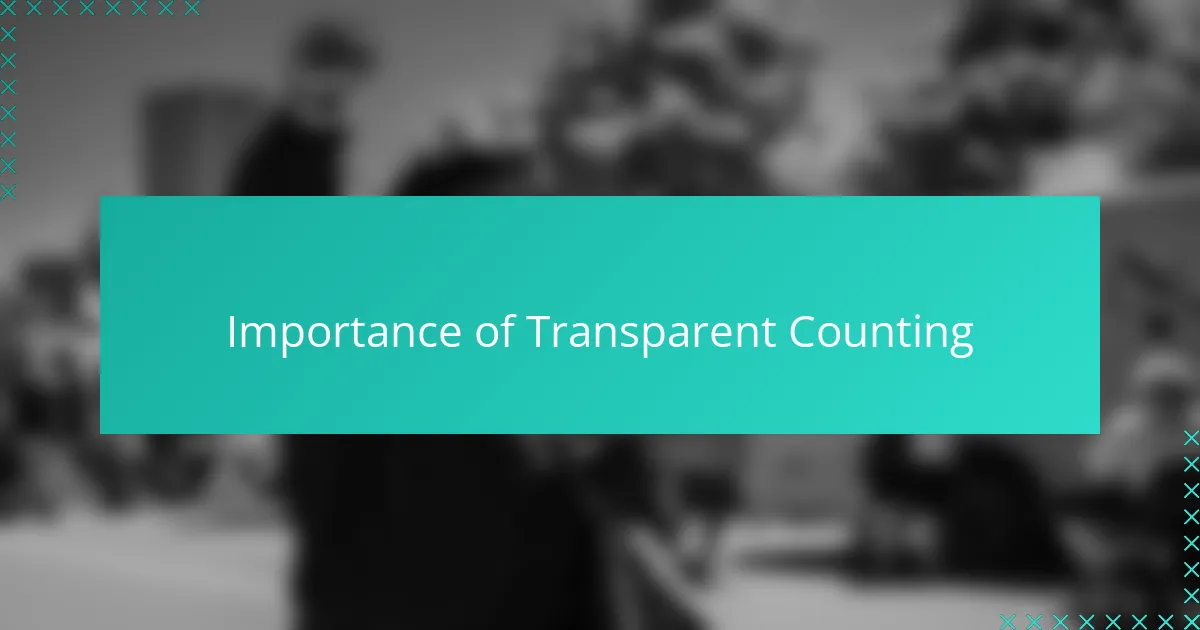
Importance of Transparent Counting
Transparent counting struck me as the linchpin that holds the entire election process together. Without openness, how could anyone truly trust the results? Watching officials work openly, explaining each step, made the stakes feel very real.
I noticed that when counting happens in full sight—where observers can ask questions and see everything unfold—it builds confidence not just in the process but in democracy itself. Have you ever felt more assured by seeing how something important is actually done rather than just hearing about it? That’s the power of transparency.
At one point, I saw an election worker patiently addressing a skeptic’s concern about a ballot’s validity right there on the floor. That moment crystallized for me why transparent counting isn’t just about rules; it’s about respect for voters and their voices. It reminded me how deeply trust depends on what’s visible and verifiable.
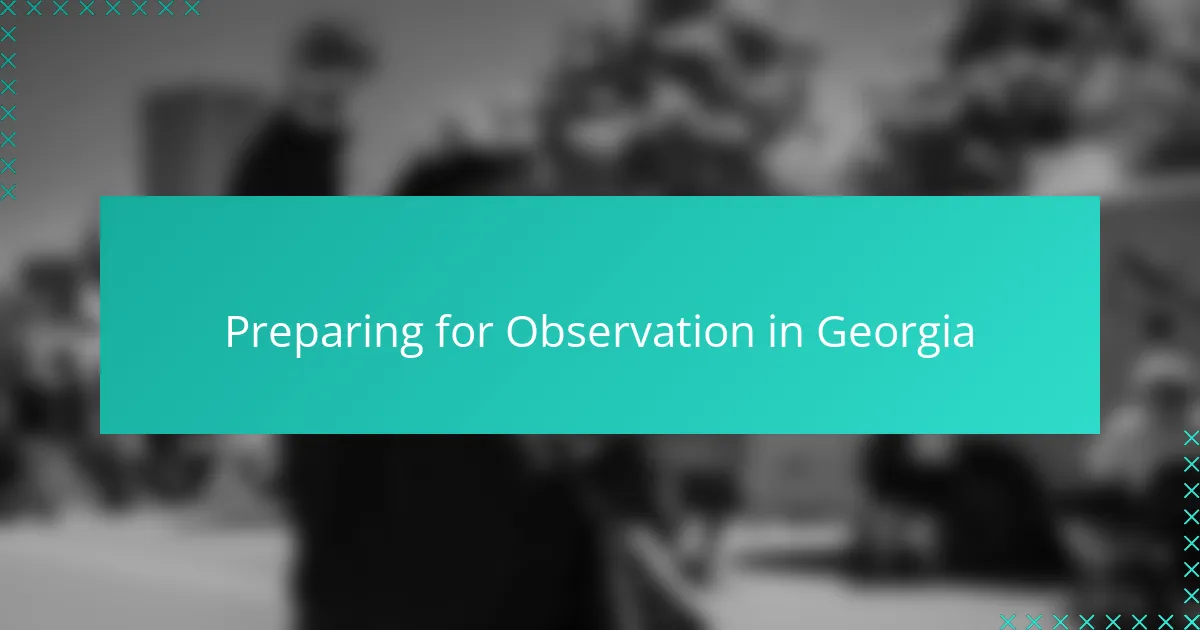
Preparing for Observation in Georgia
Preparing to observe ballot counting in Georgia meant diving into layers of rules and protocols that initially seemed overwhelming. I remember feeling a mix of curiosity and responsibility—knowing that my role wasn’t just to watch but to ensure the process stayed fair. Have you ever prepared for something where every detail mattered not just for yourself, but for the whole community?
What stood out most as I geared up was the training sessions provided for observers. They weren’t dry lectures but hands-on, clear explanations about what to look for, how to ask questions, and when to intervene if something seemed off. This preparation made me feel more confident and aware—like I wasn’t just a bystander but a crucial part of keeping the election honest.
Before stepping into the counting room, I thought a lot about maintaining impartiality. It wasn’t just about watching but doing so with an open mind, ready to understand the process fully. That mindset helped me appreciate the enormous trust placed in observers, and I carried that responsibility with a surprising sense of pride throughout the day.
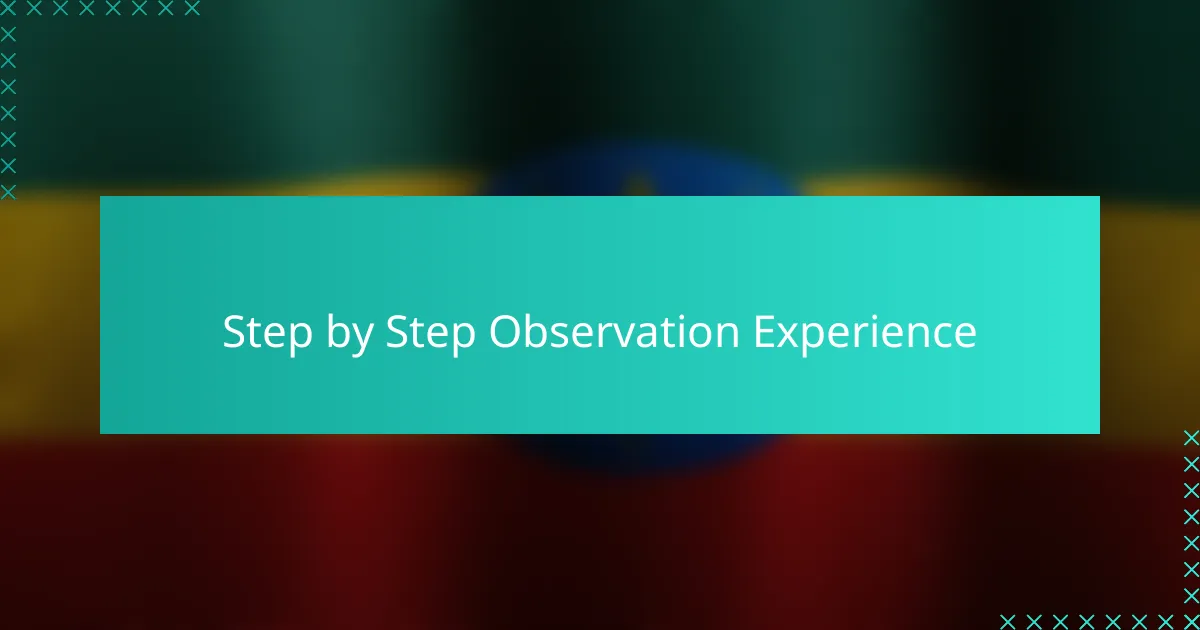
Step by Step Observation Experience
Entering the counting room, I immediately noticed the rhythm of the process—ballots arriving in batches, each one carefully unfolded and placed under close scrutiny. I found myself leaning in, almost holding my breath, as election workers double-checked each signature and scanned every ballot. Have you ever witnessed a task where precision felt almost tactile, like the weight of a single paper could tip the balance of an entire election?
As the count progressed, I tracked the step-by-step flow: sorting ballots by precinct, verifying provisional ballots, and then handing them over to the machines for scanning. Watching this sequence unfold helped me grasp the layers of oversight built into the system. What stood out was how smoothly human judgment and technology intertwined—neither replacing the other but working hand in hand to ensure accuracy.
One moment that stayed with me was when a discrepancy arose, and the team paused to re-examine a small stack of ballots. The room shifted from quiet efficiency to focused problem-solving. That pause, filled with calm commitment rather than panic, showed me just how seriously everyone took their role. It made me reflect on how every second counted—not just in time but in safeguarding democracy’s very essence.
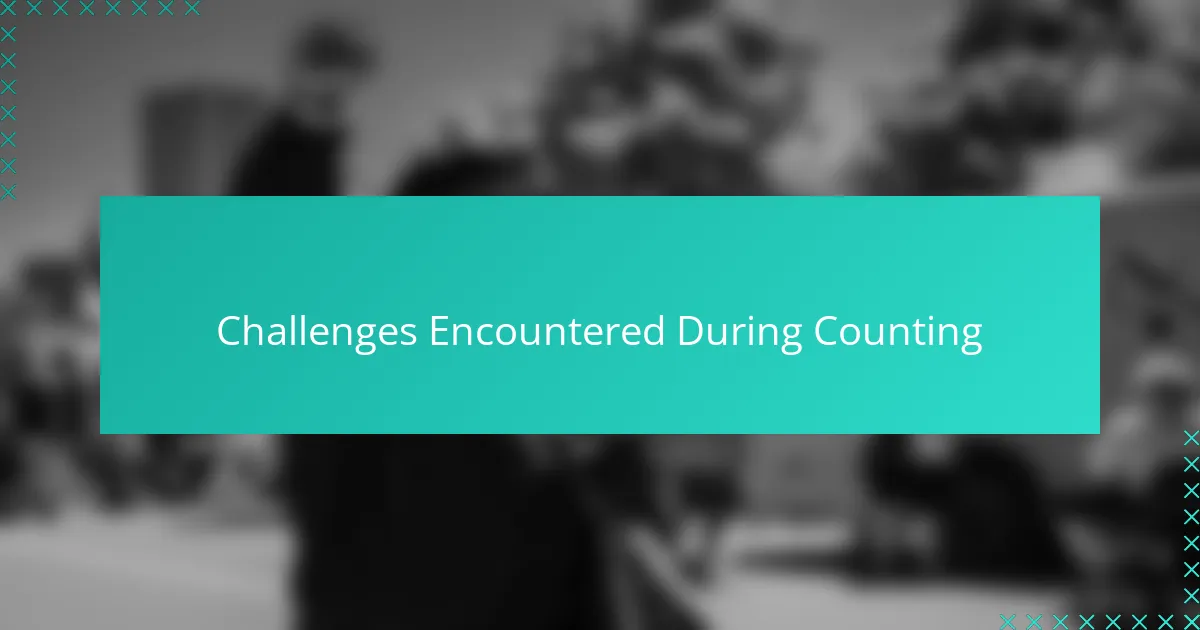
Challenges Encountered During Counting
Challenges surfaced quickly as the counting intensified. I noticed how fragile the process could feel when a batch of ballots needed re-checking due to unclear marks or mismatched signatures. Have you ever experienced a moment where your patience was truly tested? That was my reality, watching election workers address these small but critical issues with steady hands and focused minds.
Technical glitches also made occasional appearances, briefly halting the flow. Machines would jam or fail to scan certain ballots correctly, prompting careful manual intervention. It struck me how the team’s calm responses turned potential setbacks into manageable hurdles—reminding me that resilience is just as important as precision in these moments.
What surprised me most was the human element underpinning these challenges. There were fleeting frustrations among workers, yet I saw how mutual respect and a shared commitment to fairness kept the atmosphere constructive. It made me think: in such a high-stakes environment, isn’t it remarkable how cooperation and patience can carry the day?
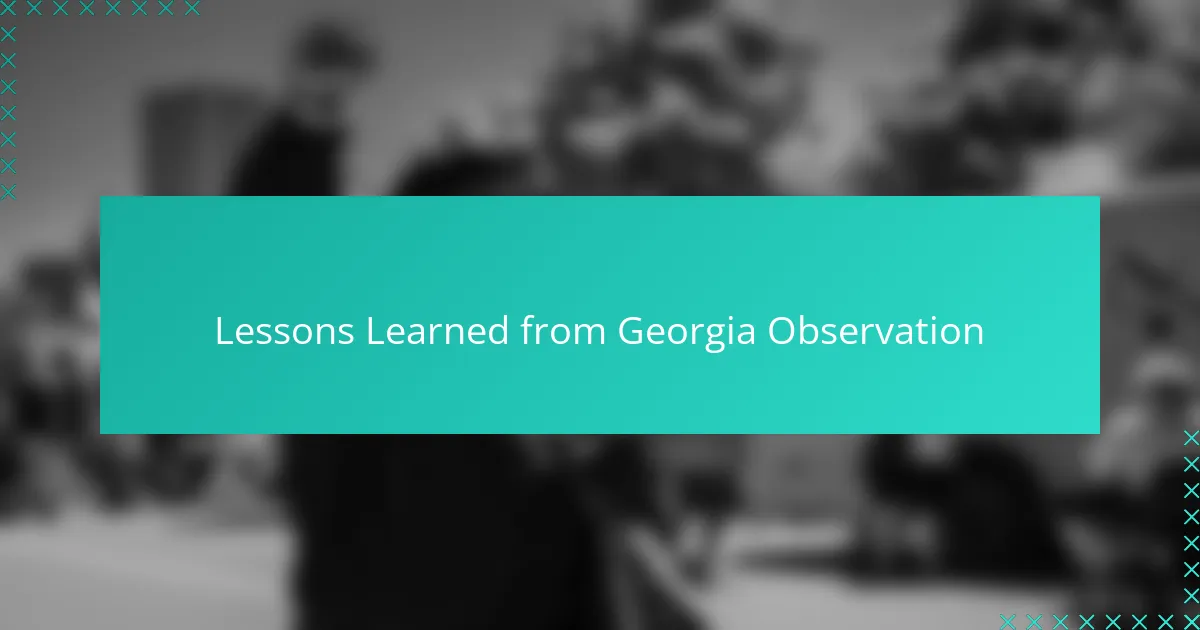
Lessons Learned from Georgia Observation
Reflecting on my time observing ballot counting in Georgia, one key lesson stood out: the importance of patience. Watching election workers methodically address every hiccup and question reminded me that accuracy isn’t rushed—it’s earned through persistence and care. Have you ever had to slow down when your instincts pushed you to speed up? That balance between urgency and thoroughness was palpable throughout the process.
Another insight was how transparency truly fosters trust. Seeing officials openly communicate and respond to concerns made me realize that trust isn’t just given; it’s built step by step, question by question. In a polarized world, this openness felt like a rare but powerful gesture—a reaffirmation that democracy thrives when people see and understand what’s happening behind the scenes.
Finally, I learned that election observation is as much about community as it is about rules. The camaraderie between volunteers, workers, and observers created a shared sense of purpose that transcended individual roles. From my perspective, this collective commitment is what ultimately safeguards the election’s integrity—it’s democracy in action, human and imperfect, yet striving for fairness.
